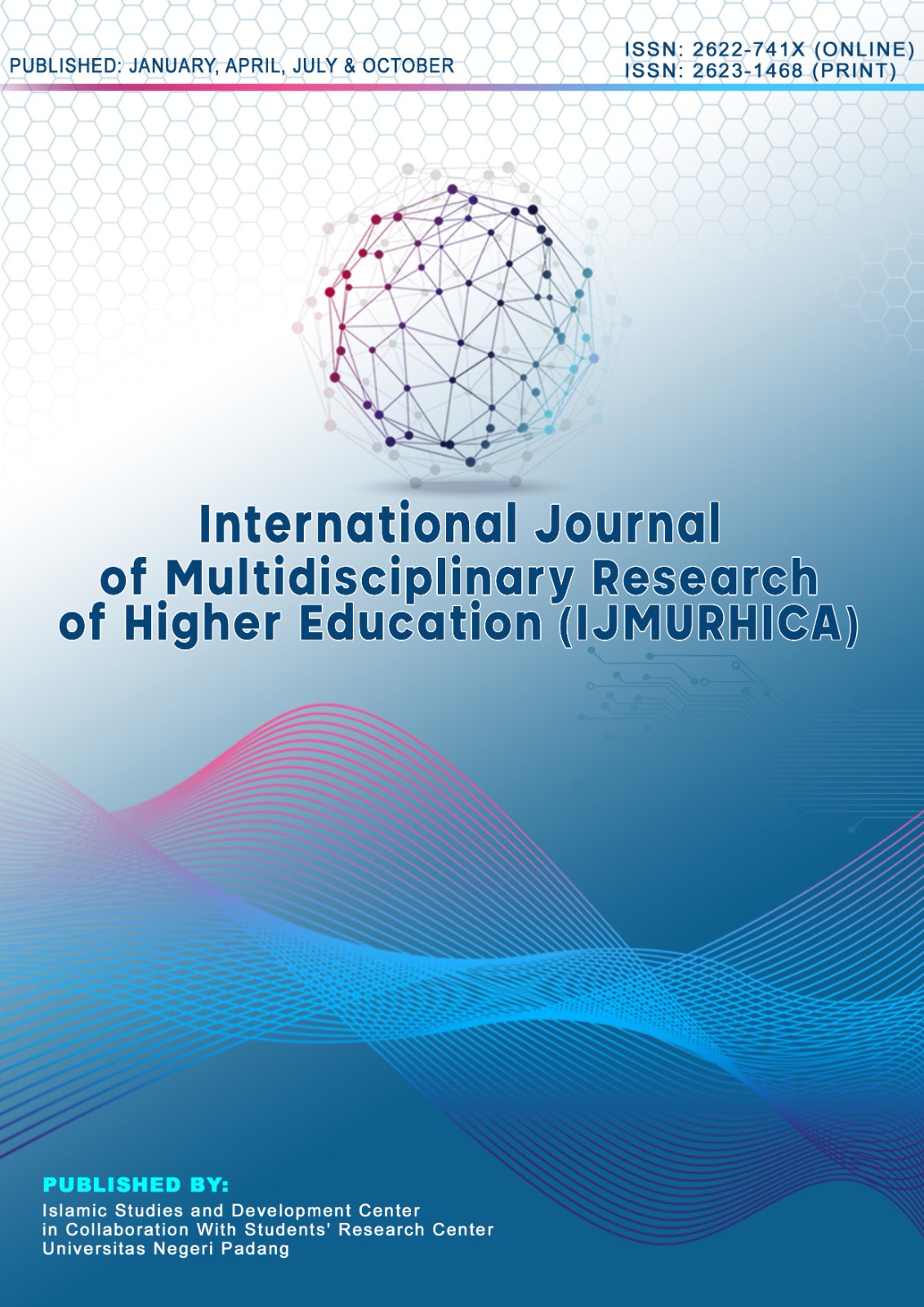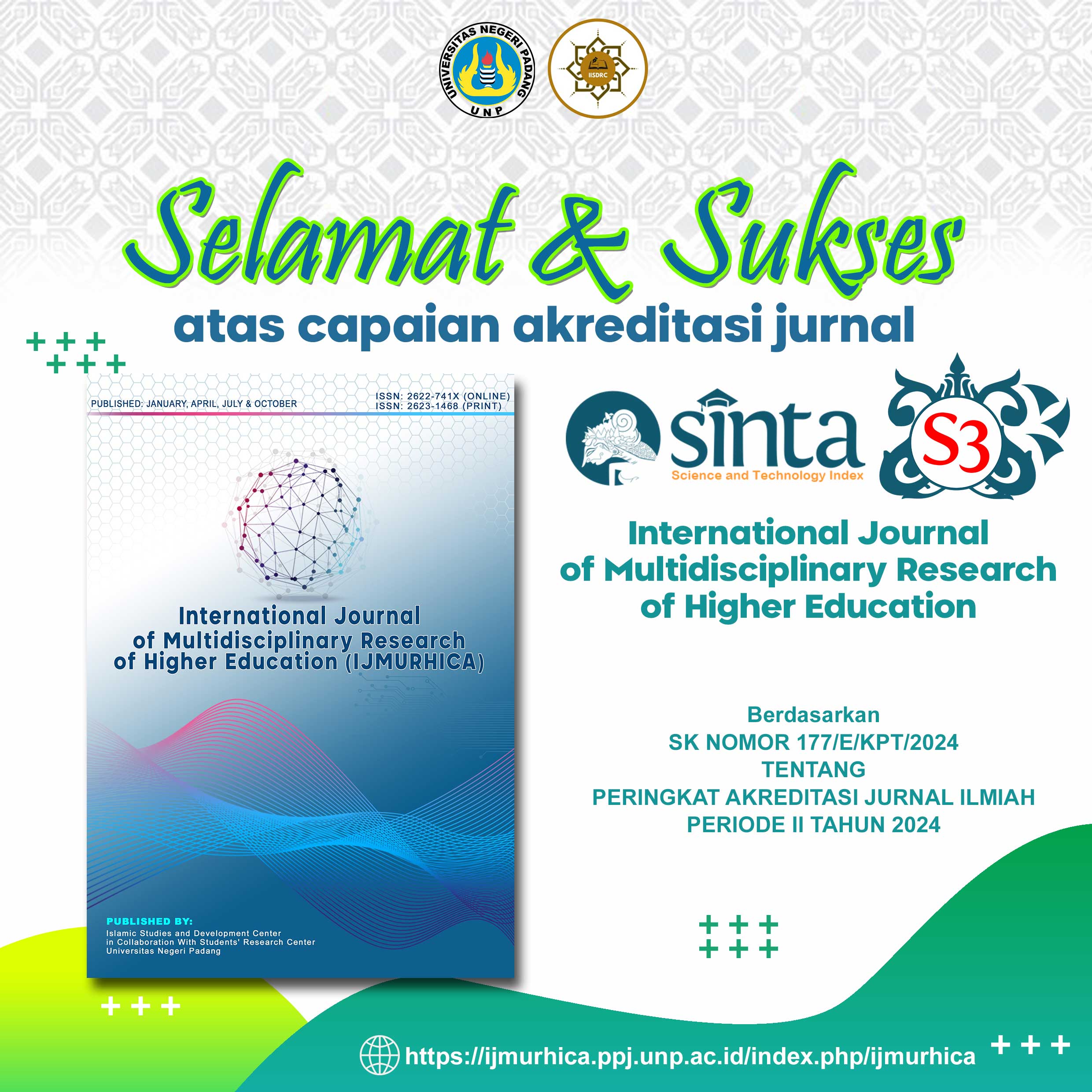Six Symbolic Communication Practices in Islamic Religious Learning for Children with Special Needs
DOI:
https://doi.org/10.24036/ijmurhica.v8i4.424Keywords:
Symbolic communication practices, Islamic education, children with special needsAbstract
Symbolic communication practices for children with special needs in Islamic religious education include the use of body movements and so on. This study aims to analyze how symbolic communication practices are used in Islamic religious education for children with special needs. This study uses a qualitative method with a case study type. The informants consisted of eight people, including Islamic education teachers, students with special needs, parents, and school principals. All interview data were analyzed using the Miles and Huberman technique, which includes data reduction, data presentation, and interactive conclusion drawing or verification. The findings of this study show six symbolic communication practices in Islamic religious education for children with special needs. The six practices are the use of visual media, worship aids, concrete movements, role modeling, continuous habituation, and emotional touch. The implications or benefits of these findings are that they make it easier for students to understand the lessons, are more effective and efficient, and help students achieve independence in learning, as seen in their increased understanding of symbols, consistency in performing worship, and positive responses.
Downloads
Downloads
Published
How to Cite
Issue
Section
License
Copyright (c) 2025 Irham Ritonga, Lahmuddin Lahmuddin, Zainun Zainun

This work is licensed under a Creative Commons Attribution-ShareAlike 4.0 International License.






